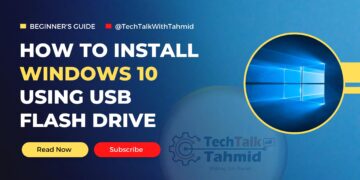<p>The personal computing landscape is on the cusp of a profound transformation, unlike anything we've witnessed in decades. With Microsoft's recent unveiling of Copilot+ PCs, boasting dedicated neural processing units (NPUs) for local AI workloads, and Apple's highly anticipated announcements regarding its own on-device AI capabilities, the race to integrate generative artificial intelligence directly into our laptops and desktops is officially underway. This isn't just about incrementally improving existing features; it's about fundamentally rethinking how we interact with our devices, promising a future where our computers are not just tools, but proactive, intuitive partners. From enhanced productivity to revolutionary creativity, the shift to on-device AI is poised to deliver a radically different, more personalized computing experience, redefining efficiency and innovation at our fingertips.</p>
<h2>The dawn of on-device AI: why local processing matters</h2>
<p>For years, the power of AI resided predominantly in the cloud. Large language models (LLMs) and complex generative algorithms required vast server farms to process information, respond to queries, and create content. While incredibly powerful, this cloud-centric approach came with inherent limitations: reliance on internet connectivity, potential latency issues, and significant privacy concerns as personal data traveled to remote servers. The advent of on-device AI, particularly generative AI, marks a pivotal shift. This new paradigm leverages specialized hardware, primarily Neural Processing Units (NPUs), integrated directly into the device's architecture. NPUs are designed to handle AI tasks with extreme efficiency, performing billions of operations per second while consuming minimal power.</p>
<p>The benefits of processing AI locally are manifold. Firstly, <i>privacy</i> is significantly enhanced, as sensitive data doesn't leave the device, staying under the user's direct control. Secondly, <i>speed</i> and <i>responsiveness</i> dramatically improve, eliminating the delays associated with sending data to and from the cloud. Tasks can be executed instantaneously, leading to a much smoother and more intuitive user experience. Thirdly, <i>offline functionality</i> becomes a reality, allowing powerful AI features to operate even without an internet connection. This is crucial for productivity on the go or in areas with limited connectivity. Finally, <i>energy efficiency</i> is a major factor; dedicated NPUs handle AI workloads far more efficiently than general-purpose CPUs or GPUs, extending battery life and reducing heat generation. This foundation of local processing is what enables the truly transformative experiences promised by the new generation of AI PCs.</p>
<table>
<caption>Key advantages of on-device AI</caption>
<tr>
<th>Aspect</th>
<th>On-Device AI Benefit</th>
<th>Cloud AI Limitation</th>
</tr>
<tr>
<td>Privacy</td>
<td>Data remains local, under user control.</td>
<td>Data sent to remote servers, potential risks.</td>
</tr>
<tr>
<td>Speed/Latency</td>
<td>Instantaneous processing, no network delay.</td>
<td>Dependent on internet speed and server load.</td>
</tr>
<tr>
<td>Connectivity</td>
<td>Full functionality even offline.</td>
<td>Requires stable internet connection.</td>
</tr>
<tr>
<td>Energy Efficiency</td>
<td>NPUs optimize power consumption for AI tasks.</td>
<td>Continuous network communication consumes more device power.</td>
</tr>
</table>
<h2>Microsoft's copilot+ PCs: the first volley</h2>
<p>Microsoft has fired a clear opening shot in this new battle, launching its Copilot+ PC initiative with a bold vision. These devices are defined by a crucial requirement: a minimum of 40 TOPS (tera operations per second) of NPU performance. This benchmark, primarily met by Qualcomm's Snapdragon X Elite and X Plus chips, ensures that Copilot+ PCs can handle complex generative AI tasks directly on the hardware. The immediate impact is a suite of brand-new, on-device AI features designed to enhance productivity, creativity, and communication.</p>
<p>Key features showcased include <i>Recall</i>, a groundbreaking photographic memory for your PC that allows users to instantly find anything they've seen or done by scrolling through a timeline of their digital activity. This isn't cloud-based tracking; it's locally processed and secure. <i>Cocreator</i> offers real-time generative image creation and editing directly within applications like Paint, transforming simple sketches and text prompts into sophisticated artwork. <i>Live Captions</i> provides instant, high-quality translation of any audio, from video calls to streamed content, into English subtitles in real-time. Other integrations include enhanced Windows Studio Effects for video calls, improved Copilot integration for system-wide assistance, and advanced AI-powered photo editing tools. Microsoft's strategy is to bake AI deeply into the Windows experience, making it an ambient, ever-present helper that understands context and anticipates needs, all while prioritizing local processing for performance and privacy.</p>
<h2>Apple's strategic counter-move: integration and privacy</h2>
<p>While Microsoft has shown its hand, Apple, true to form, has remained tight-lipped about its specific AI plans, though an imminent unveiling is expected. However, based on Apple's history and strategic priorities, we can anticipate a distinct approach to on-device generative AI. Apple has long integrated dedicated neural engines into its A-series and M-series chips, which already power features like advanced photography processing, Siri, and dictation. Their strength lies in deep vertical integration, controlling both hardware and software, allowing for unparalleled optimization.</p>
<p>Apple's AI strategy will undoubtedly emphasize <i>privacy</i> as a core differentiator, likely processing as much as possible on-device by default. We can expect significant enhancements to Siri, making it far more contextual, conversational, and capable of understanding complex, multi-step commands, leveraging local LLMs. Generative features could include advanced on-device summarization of documents, web pages, and emails, intelligent content creation suggestions within Pages and Keynote, and sophisticated photo and video editing capabilities that go beyond current computational photography. Imagine an enhanced "Magic Eraser" that truly understands context or video effects that learn from your style. Furthermore, Apple will likely focus on seamless integration across its entire ecosystem – iPhone, iPad, Mac – ensuring a consistent and fluid AI-powered experience. Their strength will be in making powerful AI feel effortless and deeply personal, subtly enhancing existing applications rather than overlaying a new "AI layer" on top of the OS.</p>
<h2>The transformative user experience and future implications</h2>
<p>The implications of pervasive on-device generative AI extend far beyond current showcase features. This shift promises a fundamentally more intuitive and proactive computing experience. Imagine a device that genuinely understands your workflow, anticipating your next action and offering assistance before you even ask. Instead of navigating menus or remembering keyboard shortcuts, you might simply express your intent, and the AI assists in executing it across various applications. For instance, generating a marketing report might involve merely stating the desired content and audience, with the AI assembling data, drafting text, and creating visuals. Students could receive real-time, personalized tutoring assistance, while creatives could iterate on designs and compositions at unprecedented speeds.</p>
<p>Accessibility will also see tremendous gains, with real-time audio descriptions, personalized communication aids, and intelligent navigation for diverse needs. Beyond productivity, the very nature of human-computer interaction will evolve. We'll move from a command-based system to a more collaborative one, where the device acts as an intelligent co-pilot, not just executing instructions but offering creative solutions and automating mundane tasks. This opens the door to entirely new software categories and redefines existing ones, making computing feel less like a series of discrete tasks and more like a fluid extension of human thought and creativity. The future of personal computing is shaping up to be less about what the user can do <i>with</i> the device, and more about what the device can empower the user to <i>achieve</i>.</p>
<p>The battle for on-device generative AI is indeed officially underway, with Microsoft's Copilot+ PCs laying down a clear marker and Apple poised to reveal its own strategic vision. We've explored the fundamental shift towards local AI processing, driven by the immense benefits in privacy, speed, and offline capability, all powered by dedicated NPUs. Microsoft's initial salvo focuses on practical, transformative features like Recall and Cocreator, deeply integrating AI into the Windows experience. Apple, on the other hand, is expected to leverage its ecosystem and privacy-first ethos to deliver a seamless, intuitive AI experience across its devices. This competition isn't just about who has the faster chip or the cleverer feature; it's about which vision for human-computer interaction will resonate most deeply with users. Ultimately, the outcome promises a computing era where our devices are not merely tools, but intelligent, proactive partners, redefining productivity, creativity, and the very essence of digital interaction for everyone.</p>



















